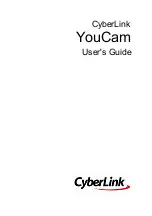
•
RDFSNOOP. The RDFSNOOP program opens the image files in privileged mode and must
be licensed with FUP or by running the RDFINST macro. RDFSNOOP can be owned by any
user ID. RDFSNOOP must be run by a member of the super-user group (user ID 255,
nnn
)
to read the image files.
•
RDFUPDO. RDF updater programs open image files in privileged mode and must be
licensed with FUP or by running the RDFINST macro. RDFUPDO also must be able to open
database files for protected write access. When querying the backup database files, users
should always open the files for shared read access.
•
RDIMAGE. The RDIMAGE program opens the image files in privileged mode and must
be licensed with FUP or by running the RDFINST macro. RDIMAGE can be owned by any
user ID. RDIMAGE must be run by a member of the super-user group (user ID 255,
nnn
) to
read the image files.
Using the OWNER Attribute to Allow Super Group Users to Start, Stop, and Manage
RDF
By setting the OWNER global configuration parameter in a SET RDF configuration command,
you are specifying the primary owner of your RDF environment (such as SUPER.RDF, for
example). Doing so enables other super group userids to start, stop, and manage RDF.
Once the OWNER attribute is set, you must use SAFEGUARD to limit EXECUTE access to the
RDFCOM object so that only those super group users authorized to manage RDF can run
RDFCOM. Failure to do so is a serious security risk because, thereafter, all RDF objects run as
the userid of the RDF OWNER.
Initializing and Configuring TMF
After copying the appropriate files from the primary system to the backup system, you must
ensure that TMF is configured on both systems to support RDF operations. The actions you take
to do this depend on whether or not TMF was running previously on this system.
TMF Subsystem Not Running Previously
If TMF was not running previously on the primary system, after you have installed TMF you
should take the following steps:
1.
Include the following commands in the TMF configuration OBEY command file:
START TMF, DISABLE BEGINTRANS
DISABLE AUDITDUMP MAT
Although not required by RDF, it is recommended that you start TMF with transaction
processing turned off, and then turn it on after the RDF subsystem is started. Doing so
assures you that RDF is fully operational before transaction processing begins.
The DISABLE AUDITDUMP command ensures that TMF does not purge any audit trail
files before RDF extracts all pertinent data from them.
2.
Initiate a TMFCOM session and then execute the TMF configuration OBEY command file.
NOTE:
You should not restart the applications until RDF has been installed, initialized,
started, and transaction processing in the primary system has been turned on (by issuing a
TMFCOM ENABLE BEGINTRANS command).
If TMF was not running previously on the backup system, after you have installed TMF you
must use TMFCOM to issue a START TMF command and one or more ADD DATAVOLS
commands to add to the TMF configuration all disk volumes to be used by the RDF updater
processes.
78
Installing and Configuring RDF
Содержание NonStop RDF
Страница 68: ...68 ...
Страница 186: ...186 ...
Страница 260: ...260 ...
Страница 278: ...278 ...
Страница 284: ...284 ...
Страница 290: ...290 ...
Страница 308: ...308 ...
Страница 322: ...322 ...
Страница 336: ...336 ...
Страница 348: ...348 ...
Страница 464: ...464 ...
Страница 478: ......
















































